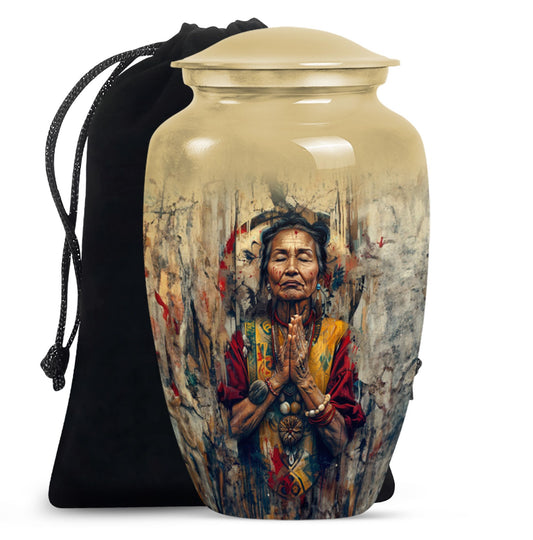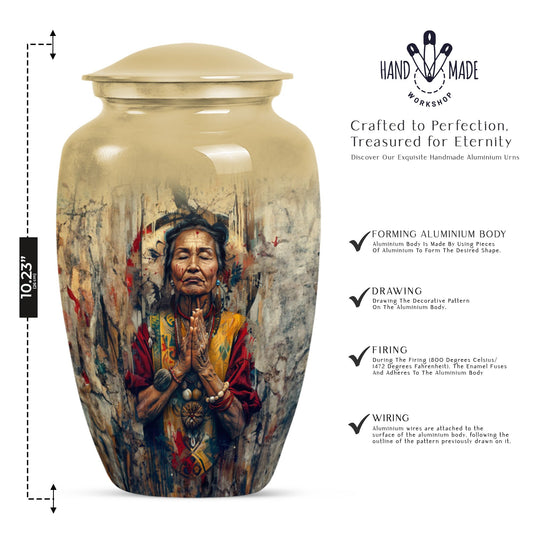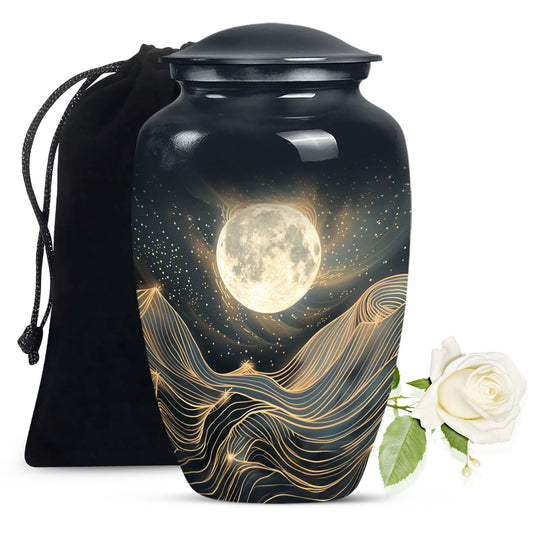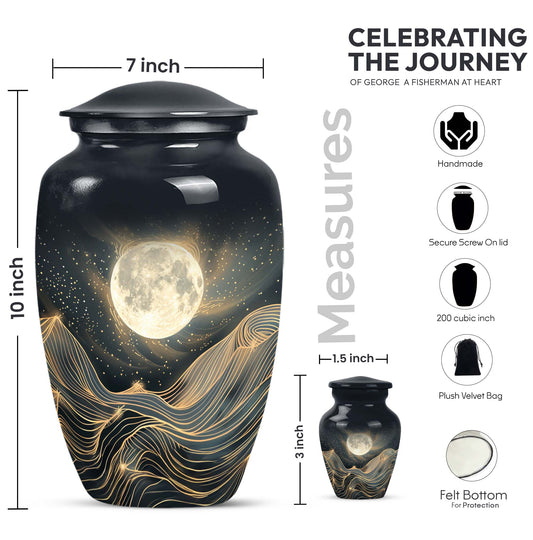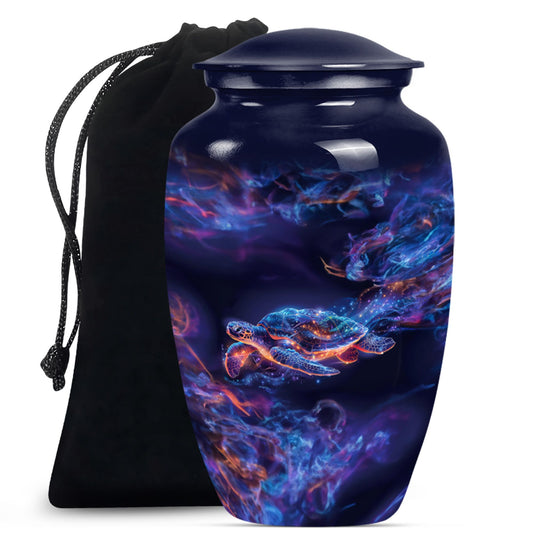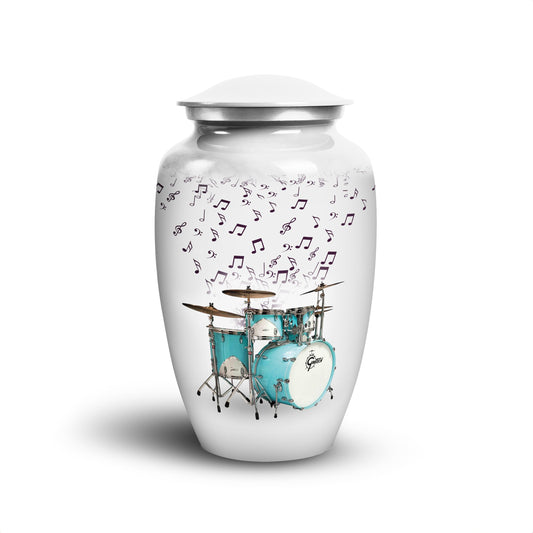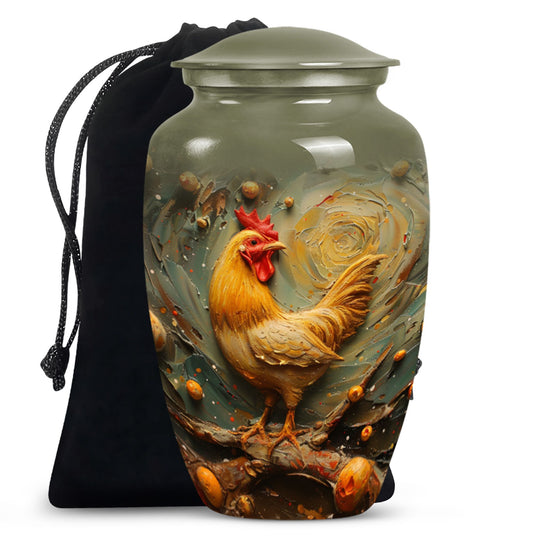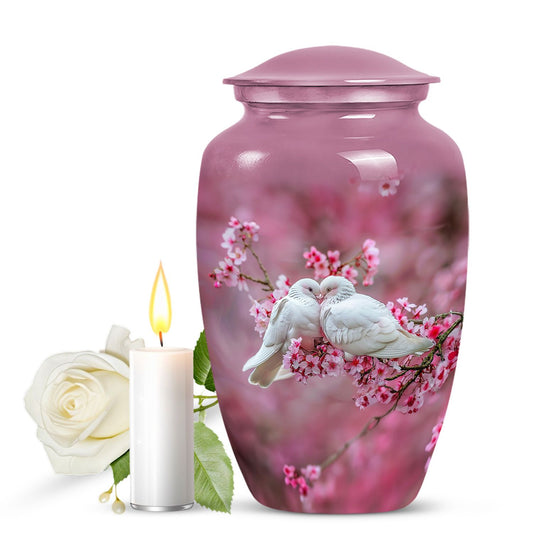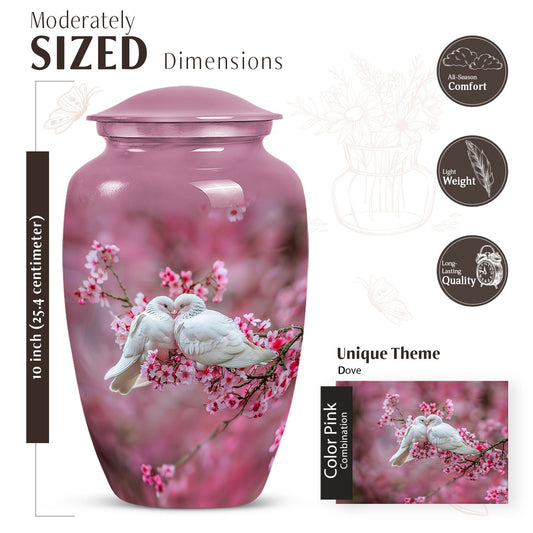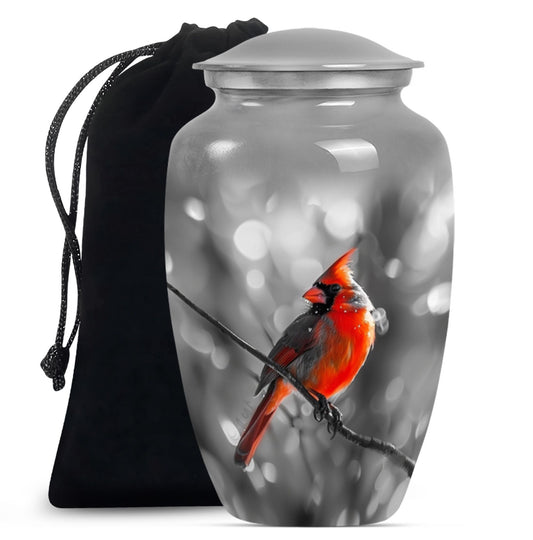Popular Urns
Understanding the Different Colors of Mourning in Various Countries

Ever since humankind began to lose family and friends, cultures worldwide began to reach for specific colors as an outward expression during times of mourning. Though the colors change from society to society, many of them have deep symbolic meanings and conventional roots in history. Here is a look at the most common colors worn during mourning and the rich meaning behind them.

Black and its association with the spiritual world-
Perhaps the most universally recognized color of mourning is black. Its somberness and lack of light make it the very traditional shade of sadness across a host of Western cultures—the very terms for mourning attire, such as "blacks" or "black crepe," outline their color.
Black for Mourning:

The practice of wearing black to mourn originally traces back to the early Romans with the toga pulla, which was a large, black toga specifically reserved for mourning periods. The heaviness of its blackness signified the darkness, sorrow, and emptiness one felt once a person passed. Eventually, complete black attire became standard in Western bereavement traditions.
Importance and significance of White color-

While black is most prevalent within many Western traditions, in many Eastern cultures, it is white that represents mourning and is used as a symbol of purity and rebirth. The wearing of white is common in countries such as China, India, and Myanmar, and this practice reflects the white mourning clothes that are used to cover and honor the dead.

In Chinese culture, the association of white with mourning refers specifically to principles of Taoism, as well as yin and yang, with yang being the white positive life force - mourning white is the reverse of the world of yang, an opposite, just as a person in white has let go of the world of the living and moved on. Family members in white have a visible burden of the loss and change to come.
What all does the valuable hues of Purple symbolize-

The rich, solemn shades of purple have long carried overtones of mourning, penitence, and deference, especially in countries with Catholic influences. Indeed, the source of the purple used by the Catholic clergy and bishops during Lent and Advent is the Latin word "purpura," meaning "purple-dyed."

Catholic queens in Europe initiated mourning in purple because, for this religious and regal community, purple represented obscurity better than simple black. Because the color is quite rare and expensive, it fitted well to be a color of mourning and respect for aristocracy and royalty. At the present time, this is a typical color for Christian mourning and funerals.
Red- still a controversial color:
In the Zulu culture in South Africa, it is not red that is associated with death and sorrow, but rather the vividness and contrast of the color. For example, newly bereaved Zulu women are clothed in iziphako, which are red print clothes; this is meant to represent the loud and tangible pain and agony the loss brings into their lives.

A bright color exemplifies the rawness and visibility of their emotion which at times becomes very difficult for announcing our loss even on social media platforms. The same loss later in time becomes red and darkens to black or purple, reflecting a more internalized and secretive state of grief.
In Hindu traditions, red is also symbolic of the dead attaining holy liberation, or moksha, and the ceremonies of cremation by which this transference of spiritual destiny is enacted. Red is placed in the mourning dress of married women as a symbol of their separation from the marriage bond.
Yellow- the uncommon color in mourning traditions:

In Mexico and other Latin American countries that fell under the influence of indigenous traditions, yellow came to have special symbolic significance during Día de los Muertos or Day of the Dead celebrations. The bright marigolds, known as cempasúchil, are scattered by the millions to create colorful pathways welcoming the souls of the deceased back for their annual visit.
The brilliant yellow color illustrates the brightness, optimism, and joy that the holiday holds for celebrating the memory of the dead. It also connects to this Mesoamerican belief in which the life force exits the body through the head, swaying souls guided by marigolds back from the afterlife.

Conclusion:
While the practices do vary, of course, the meanings vary, and so do the associations. The traditions that color mourning wear are as numerous as the definitions. From black's dismal void to the vibrancy of yellow's light, each offers meaningful expression, deep in symbolism, of the fundamentally human activity associated with the honoring and grieving of those we have lost.
ALSO READ:
What to Do with Your Beloved's Ashes After Cremation
How to Transfer Ashes into a Cremation Urn: A Step-by-Step Guide
Guide to Scattering Ashes: Creating a Peaceful and Meaningful Ceremony













